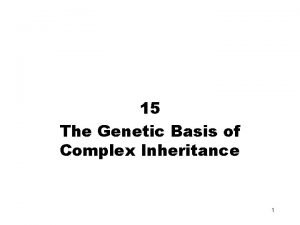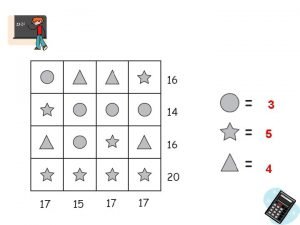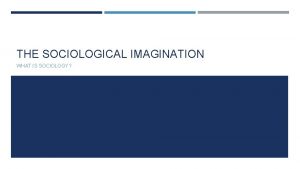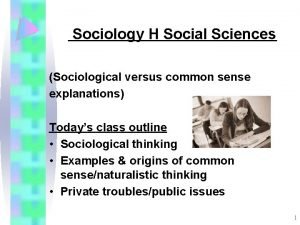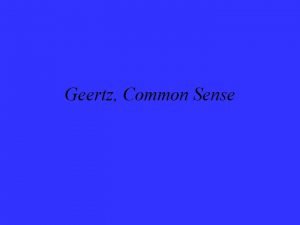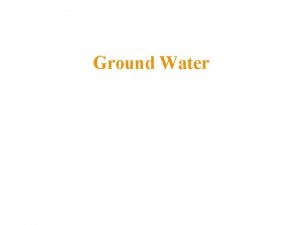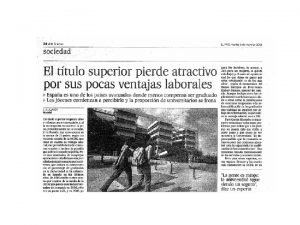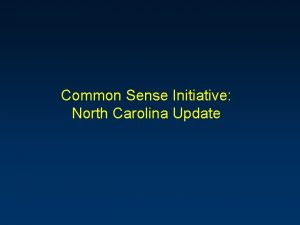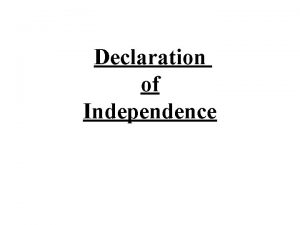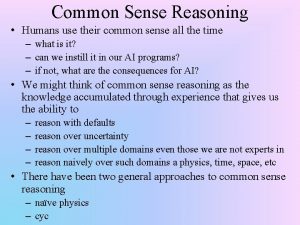Common Ground Common Good Common Sense A Process



















- Slides: 19

Common Ground, Common Good, Common Sense A Process for Developing Health Care Reform Bob Van Oosterhout Mid. Michigan Health Park, Houghton Lake Michigan Email: bob. vanoosterhout@midmichiganhs. org For additional information visit bobvanoosterhout. com

How Do We Get There ? (in Spite of These Obstacles to Reform) • Political attitudes have become more rigid and resistant to change (Lee Atwater’s concept) • The Health Care System is highly complex; solutions are complicated and difficult to explain • The public has limited information and many misperceptions about many aspects of the system • There are widely diverse opinions and a broad range of competing self-interests for different components of reform • It is easier to make a case and mobilize support for doing nothing (e. g. 1992) • Funding is a huge obstacle at least in the near future

The Market Cannot Provide Quality Health Care To All Market • Value neutral • Prone to manipulation • Adversarial, competitive • Profit-centered • Long-term equilibrium • Promotion/marketing • Some will lose • Survival of the fittest Health Care • Value based • Stability, equal access • Cooperative • Outcome-centered • Short-term needs • Evaluation/accountability • Basic human right • Health for all

A Process Based on a Community Organizing and Empowerment Perspective: • The most difficult issues are best resolved with broad-based input and responsibility • HTC view: Disadvantaged people are a resource to be tapped, not a problem to be solved • Empowerment involves working “with” rather than “for” people

Advocate Bottom-Up Instead of Top-Down Planning Top Down • Limited perspective • Based on assumptions • Exclusive • Linear, objective • Fixed solutions • Can miss critical issues and components • Results in political infighting Bottom-Up • Broad perspective • Based on experience • Inclusive • Multi-faceted • Adaptable/responsive • In touch with critical issues and components • Develops consensus which prevents political infighting

Confronting Obstacles to Health Care Reform Obstacles • Ego -Focus on self before others • Greed – Addiction to accumulation • Rigidity – Certain, righteous, competitive Solution • Common Ground work together • Common Good for the good of all • Common Sense shared vision, open minded discussion, reasonable, thoughtful, creative

Common Ground requires development of a shared perspective, equal input and involvement of all stakeholders, access to clear accurate information, and shared responsibility. Common Good involves commitment to developing the potential of each person/stakeholder to serve the best interests of all. Common Sense includes openness to input, respect for truth, receptivity, adaptability, perceptual flexibility, accountability, and responsibility.

Components of Effective Planning • Common Ground - Widely disseminated clear and accurate information, broad-based input, and shared responsibility and investment • Common Good - Clear values, principles and priorities that form a screen for all decisionmaking • Common Sense - Commitment to what works: feedback, adaptability, accountability

Components of Proposed Planning Process • Bipartisan planning commission to oversee process • National Conversation on Healthcare (1) Clear accurate widely disseminated information (2) National Town Hall meetings to discern and prioritize needs, concerns, values, principles and priorities that become a screen for future deliberation; also review and provide feedback on proposals • Stakeholder meetings with peers to identify options and opportunities and review proposals • Planning teams (3 -5, later reduced to 2 -3) made up of representatives of each stakeholder group • Carefully monitored planning process where commitment to truth and prioritized needs, concerns, values, principles and priorities serve as screen for discussion and decision making. • Multi-level review process • Final plan chosen from 2 -3 options • Map for transition from current system to quality, affordable health care for all

Outline of Planning Process 1. Appoint a Bi-Partisan Commission to oversee and implement process 1. 2. 3. 4. Conduct comprehensive system evaluation Develop strategies and systems that insure truth and balance in all discussions related to health care reform Develop broad based system for disseminating information about health care systems to the public Train facilitators to insure honest and reasonable discussion in Town Hall meetings, Stakeholder Groups and Planning Team meetings.

2. Begin a National Conversation about health care by disseminating information to the public in series of two-hour programs (similar in format to “Frontline” or “An Inconvenient Truth”) over a period of three to six months. Each session followed by polls and opportunities for public input/discussion online, in community settings, college forums etc.

Possible Components of National Conversation on Health Care 1. How good and bad decisions are made 1. Identifying obstacles to effective decision making 2. Basic Principles of effective decision making 2. 3. 4. 5. 6. 7. How advertising misleads / How lobbying works Overview of health care system strengths and weaknesses Where the money goes / costs that don’t contribute to care Effects of current system on various stakeholders (who profits, who suffers) Inefficiencies in current system 1. Communication/Data portability 2. Fragmentation 3. Billing 4. Lack of effective evaluation process Review systems in other countries

3. Continuing the Conversation: National Town Hall meetings (online/community settings/ videoconferences etc. ) 1. List concerns 2. Identify and discuss needs, values and principles of ideal system 3. Discuss and rate financing options

4. Commission disseminates summary of issues, principles and values from National Town Hall Meetings 5. Second set of National Town Hall Meetings • Review • Discuss • Prioritize values, principles, components

Examples of Possible Results of Town Hall Meetings Values Principles $ Priorities Ideas Shared responsibility for costs Single simplified records and billing system with built-in accountability and quality improvement Who: Children, parents and those who contribute to health, safety and well-being of citizens are covered first Create a simple universal form to update symptoms and list concerns prior to medical visits Simple, clear, transportable (easy information sharing) Integrated system of universal care within funding limitations Low-cost system to fairly deal with provider error Accountability and ongoing quality improvement Costs to consumers based on healthy lifestyle and ability to pay What: 1 st = Health maintenance and early detection; Infectious diseases; emergency care; end of life care; Last = terminal dx in aged, cosmetic care Costs, profits and income are reasonable and not excessive Minimize costs not directly related to care Individuals are responsible for their own health People with unhealthy lifestyles pay more for care Interstate/intnl system for rare /complex problems

6. Commission appoints local, then regional stakeholder peer groups with two trained neutral facilitators for each group to insure balance, clarity and consistency with values, principles and priorities outlined by citizens. These groups identify components of new health care system 7. Commission, in consultation with stakeholder groups, appoints representatives to make up three to five system design teams who each develop a draft design of a possible health care system

Examples of Stakeholder Groups Primary Care providers, nurses, patients Large, medium and small employers Rehabilitation providers People with disabilities Specialty Care providers, nurses, patients Self-employed Hospice Local, State and Federal government representatives Hospital providers, nurses, patients Labor unions Critical care providers Public Health representatives Emergency and Urgent Care providers, nurses Uninsured people Rural and urban providers and patients Pharmaceutical companies Medical records, billing staff Dental providers Medical researchers Pharmacists Insurance and managed care providers Mental health providers Low income people Senior Citizens

8. Teams evaluate each other’s proposals and reform into two or three teams to design alternative systems. 9. Third set of national town hall and stakeholder peer meetings to review, rate and provide feedback on two or three alternative proposals

10. Commission develops single proposal and reconvenes system design teams to develop a transition process along with an evaluation and accountability system for improving health care over time. 11. Fourth set of town hall and stakeholder meetings to review, rate and provide feedback on alternative proposals for transition process. 12. Commission writes legislation and presents it to Congress.
 Dominant genetic variance
Dominant genetic variance Narrow sense heritability vs broad sense heritability
Narrow sense heritability vs broad sense heritability Good thoughts good deeds good actions
Good thoughts good deeds good actions Hello and good evening
Hello and good evening Good afternoon students
Good afternoon students You are good when theres nothing good in me
You are good when theres nothing good in me Good afternoon morning
Good afternoon morning Uil computer science practice test
Uil computer science practice test Is sociology based on common sense
Is sociology based on common sense Qqqnn
Qqqnn Common sense and sociological explanations
Common sense and sociological explanations Right attitude and common sense
Right attitude and common sense Common sense examples
Common sense examples Venn diagram of olive branch petition and common sense
Venn diagram of olive branch petition and common sense Olive branch petition common sense
Olive branch petition common sense Introduction to sociology tischler
Introduction to sociology tischler Common sense is published
Common sense is published Olive branch petition and common sense venn diagram
Olive branch petition and common sense venn diagram Common sense education fair and square
Common sense education fair and square Common sense of purpose in the workplace
Common sense of purpose in the workplace

